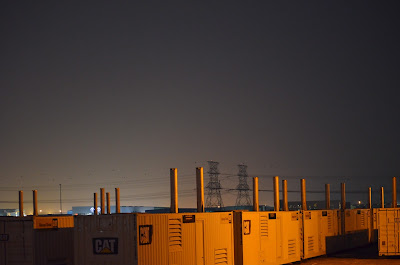We now live in a world where virtually everything requires energy, and where a momentary interruption in its supply can throw economies and societies into disarray. And as the world will need more of energy, industry stakeholders should, therefore, keep a close watch on its efficient production and utilization to ensure that it will be sufficient for the coming generations.
Experts predict that global energy demand will continue to grow through 2050. In a recent article, McKinsey and Company, a global research and information firm, revealed that the global requirement for energy will grow by an average of 0.7 percent a year through 2050. This growth rate is notably lower than the current two percent, owing to digitization, slower population and economic growth, greater efficiency, the decline in demand in Europe and North America, and the global economic shift toward services, which use less energy than the production of goods. Despite this decline, it cannot be ignored that there is still a critical need to meet the future demand if the world is to have a continuous and reliable supply of energy.
Electricity will account for a quarter of all energy demand by 2050. McKinsey predicts that more than 75 percent of new electricity capacity will come from wind and solar. Thus, wind and solar power generation are expected to grow four or five times faster than every other source of electrical power.
As a global temporary power solutions provider, we see this as a welcome development in increasing the availability of electricity in areas that require it, and in diversifying the energy mix to encourage long-term energy security.
Multi-megawatt temporary power technologies are primed to work in tandem with renewable energy sources to help surmount issues of power supply unpredictability and intermittency, especially in power-intensive industries like oil & gas, construction, and utility power generation, transmission and distribution.
Temporary power plants can also provide supplemental power to renewable energy facilities during planning, manufacturing, installation, commissioning, operations and maintenance. Temporary power plants can help ensure that renewable energy plants are constructed and delivered on time and as planned, and that they remain efficient, reliable and in optimum condition at all times.
As a global player in the rental power industry, we recognize the ever-important role that electricity plays in the promotion of progress and development in countries around the world. As such, we continuously work on innovating and engineering power generation systems that efficiently responds to the energy needs of the times. For more information on rental power plants and how it can help power your industry, please visit http://www.altaaqaglobal.com
Experts predict that global energy demand will continue to grow through 2050. In a recent article, McKinsey and Company, a global research and information firm, revealed that the global requirement for energy will grow by an average of 0.7 percent a year through 2050. This growth rate is notably lower than the current two percent, owing to digitization, slower population and economic growth, greater efficiency, the decline in demand in Europe and North America, and the global economic shift toward services, which use less energy than the production of goods. Despite this decline, it cannot be ignored that there is still a critical need to meet the future demand if the world is to have a continuous and reliable supply of energy.
Electricity will account for a quarter of all energy demand by 2050. McKinsey predicts that more than 75 percent of new electricity capacity will come from wind and solar. Thus, wind and solar power generation are expected to grow four or five times faster than every other source of electrical power.
As a global temporary power solutions provider, we see this as a welcome development in increasing the availability of electricity in areas that require it, and in diversifying the energy mix to encourage long-term energy security.
Multi-megawatt temporary power technologies are primed to work in tandem with renewable energy sources to help surmount issues of power supply unpredictability and intermittency, especially in power-intensive industries like oil & gas, construction, and utility power generation, transmission and distribution.
Temporary power plants can also provide supplemental power to renewable energy facilities during planning, manufacturing, installation, commissioning, operations and maintenance. Temporary power plants can help ensure that renewable energy plants are constructed and delivered on time and as planned, and that they remain efficient, reliable and in optimum condition at all times.
As a global player in the rental power industry, we recognize the ever-important role that electricity plays in the promotion of progress and development in countries around the world. As such, we continuously work on innovating and engineering power generation systems that efficiently responds to the energy needs of the times. For more information on rental power plants and how it can help power your industry, please visit http://www.altaaqaglobal.com
End
PRESS INQUIRIES
Altaaqa Global
Tel: +971 56 1749505











